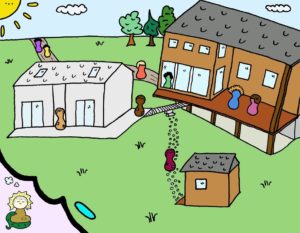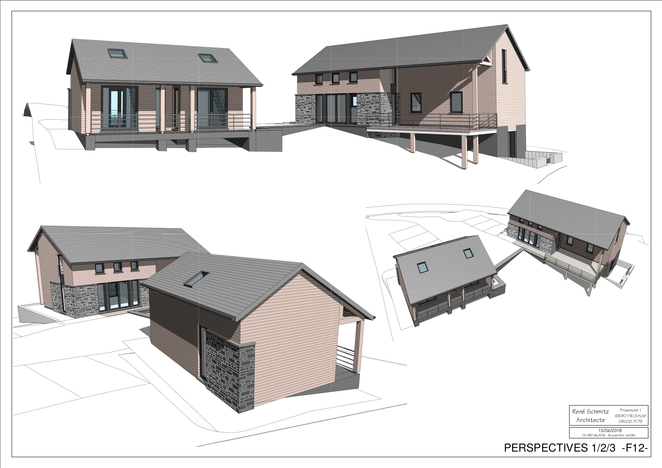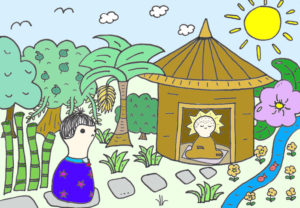On our way to build Tilorien Monastery we have already achieved a lot! We’ve purchased a piece of land and established a small main building including a Dhamma hall. All this would have never been possible without the support of many people, and just this is what makes it so beautiful: Each individual contributes what is within their possibility, and if many come together something truly amazing can emerge!
 The next step now is to build some kutis, with a twofold aim: Firstly, kutis will provide more seclusion for the monastics, and secondly, having kutis will make the bedrooms in the main building available for visitors. In other words: Building kutis will make Tilorien a true monastery where people can come and practise the Dhamma together for shorter or longer periods of time.
The next step now is to build some kutis, with a twofold aim: Firstly, kutis will provide more seclusion for the monastics, and secondly, having kutis will make the bedrooms in the main building available for visitors. In other words: Building kutis will make Tilorien a true monastery where people can come and practise the Dhamma together for shorter or longer periods of time.
In order to keep with local laws, we are only allowed to build one simple wooden garden house without building persmission. We have started building this already. Additional kutis have to be built according to local building regulations, which includes architectural drawings and a building firm, and this unfortunately makes them far more expensive. With the donations that have been given so far it was already possible to get drawings from an architect for a double kuti (i.e. two kutis under one roof), and the plans have been approved by the council in October. But although we have the permission, we don’t have the funds yet to go ahead.

In order to have the groundworks and the foundations for a double kuti done we would need about €20.000. For the house itself we would require another €60.000–63.000 (excl. interior).
If you would like to support the monastic community by providing the 4 requisites to the sangha and thereby expressing your gratitude, you can find the information on how to contribute on this page.
Monastic dwellings
By Ayya Kathrin Vimalañāṇī
When we go forth as monastics, it is part of our ordination ceremony to be reminded of the “four requisites” that our lives depend on: Robes, food, lodgings, and medicines when we are sick. Other people will offer these basic necessities to us, so that we can practise the Buddhist path and attain liberation from suffering. As long as we have these four requisites, we have what we need for survival, and make it part of our practise to be content with and grateful for whatever is offered. We regularly reflect on the purpose of these requisites to use them in beneficial ways. This is the reflection for lodgings:
“Wisely reflecting, I use the lodging: only to ward off cold, to ward off heat, to ward off the touch of flies, mosquitoes, wind, burning and creeping things, only to remove the danger from weather, and for living in seclusion.”
—MN 2
A monastic dwelling is supposed to be small, simple, and easy to maintain. It should protect the inhabitant from adverse weather conditions, insects and other animals, and most importantly, offer a quiet, secluded space for meditation practise. Having the opportunity to meditate alone and in silence is a crucial prerequisite for developing deeper states of samādhi.

“Who is in this little hut?”
“A mendicant is in this little hut,
Free of lust, their mind serene in samādhi.
My friend, you should know this:
Your little hut wasn’t built in vain.”
—Thag 1.56
At Tilorien moastery, the monastics are currently living in two bedrooms in the main building. It is our hope that we will be able to build two kutis in the future, so that conditions for practise will improve and more seclusion becomes possible. Having two kutis will also enable us to make all the rooms in the house available to lay practitioners who would like to spend some time at the monastery and get a taste of monastic life.


 Deutsch
Deutsch Français
Français Nederlands
Nederlands